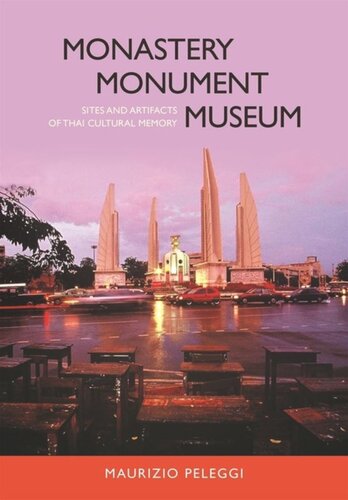

Most ebook files are in PDF format, so you can easily read them using various software such as Foxit Reader or directly on the Google Chrome browser.
Some ebook files are released by publishers in other formats such as .awz, .mobi, .epub, .fb2, etc. You may need to install specific software to read these formats on mobile/PC, such as Calibre.
Please read the tutorial at this link: https://ebookbell.com/faq
We offer FREE conversion to the popular formats you request; however, this may take some time. Therefore, right after payment, please email us, and we will try to provide the service as quickly as possible.
For some exceptional file formats or broken links (if any), please refrain from opening any disputes. Instead, email us first, and we will try to assist within a maximum of 6 hours.
EbookBell Team

4.3
28 reviewsRanging across the longue durée of Thailand’s history, Monastery, Monument, Museum is an eminently readable and original contribution to the study of the kingdom’s art and culture. Eschewing issues of dating, style, and iconography, historian Maurizio Peleggi addresses distinct types of artifacts and artworks as both the products and vehicles of cultural memory. From the temples of Chiangmai to the Emerald Buddha, from the National Museum of Bangkok to the prehistoric culture of Northeast Thailand, and from the civic monuments of the 1930s to the political artworks of the late twentieth century, even well-known artworks and monuments reveal new meanings when approached from this perspective.
Part I, “Sacred Geographies,” focuses on the premodern era, when religious credence informed the cultural alteration of landscape, and devotional sites and artifacts, including visual representation of the Buddhist cosmology, were created. Part II, “Antiquities and National History,” covers the 1830s through the 1970s, when antiquarianism, and eventually archaeology, emerged and developed in the kingdom, partly the result of a shift in the elites’ worldview and partly a response to colonial and neocolonial projects of knowledge. Part III, “Discordant Mnemoscapes,” deals with civic monuments and artworks that anchor memory of twentieth-century political events and provide stages for both their commemoration and counter-commemoration by evoking the country’s embattled political present.
Monastery, Monument, Museum shows us how cultural memory represents a kind of palimpsest, the result of multiple inscriptions, reworkings, and manipulations over time. The book will be a rewarding read for historians, art historians, anthropologists, and Buddhism scholars working on Thailand and Southeast Asia generally, as well as for academic and general readers with an interest in memory and material culture.